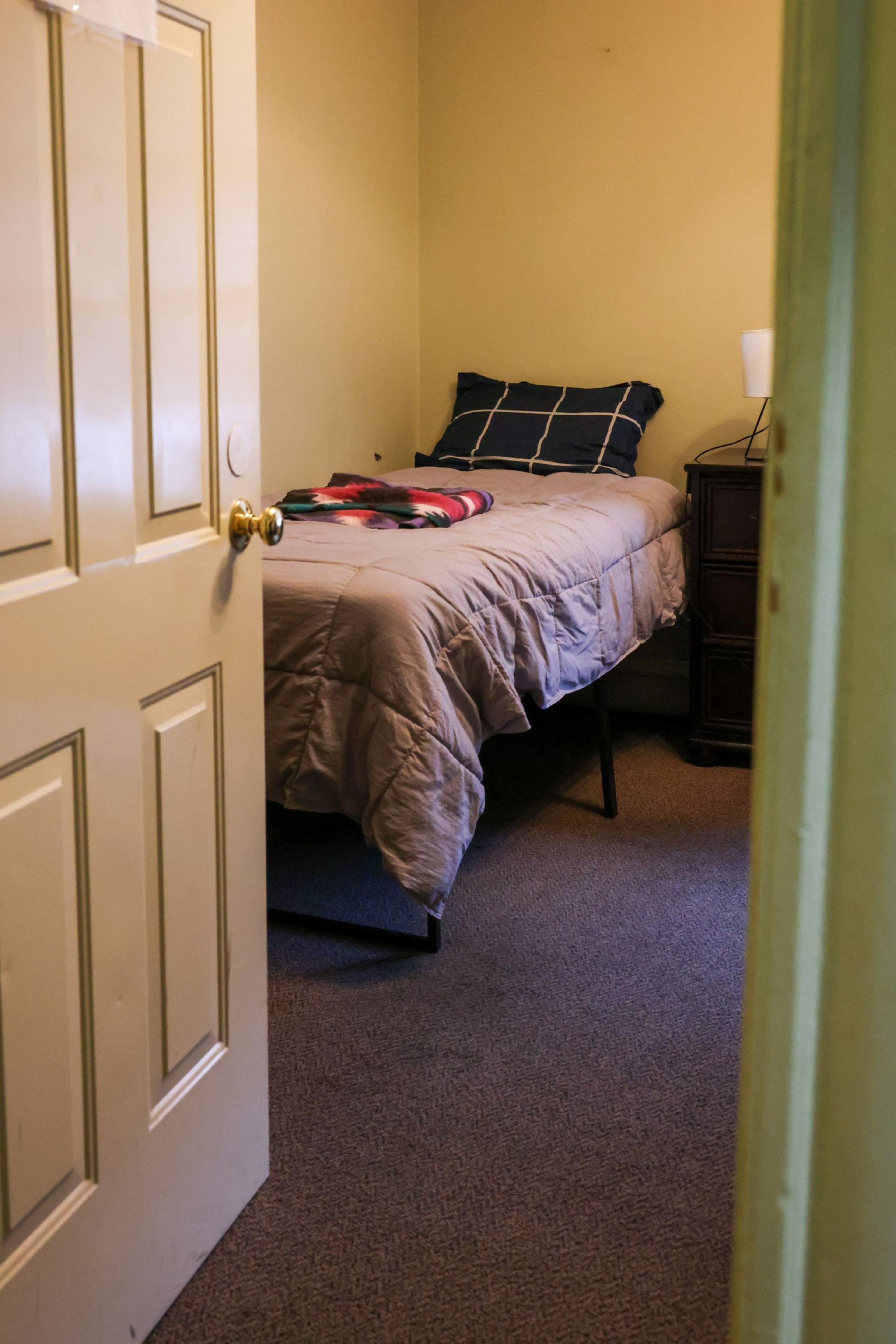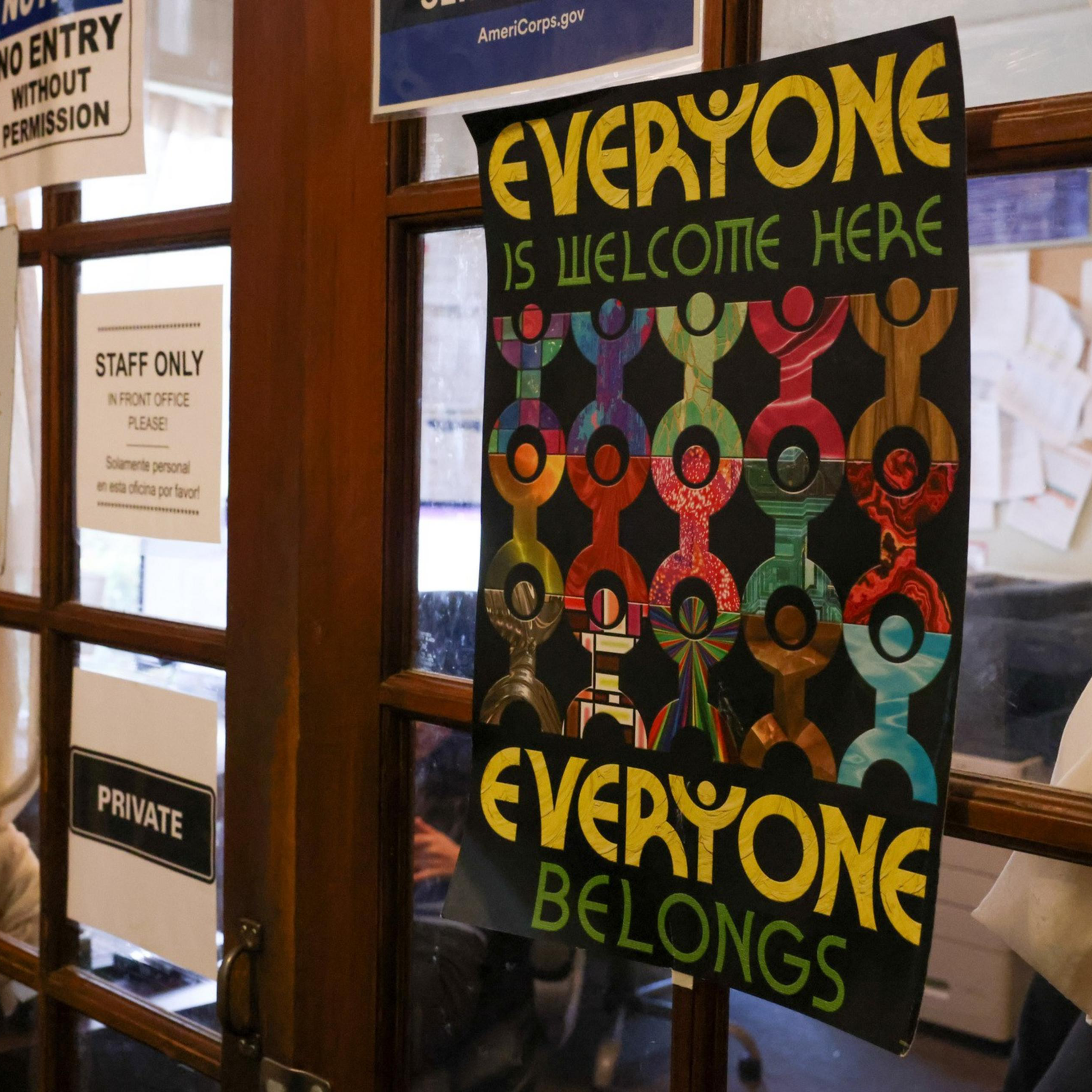The last week of January may have been the scariest time in Lance Toma’s 30-year career.
On Jan. 27, he was among thousands of U.S. nonprofit leaders who were horrified to learn that the federal Office of Management and Budget had ordered a halt on payments for virtually every grant. Those grants amount to more than half the budget for the San Francisco Community Health Center, which Toma leads.
Temporary relief came two days later (opens in new tab), when public outcry and lawsuits pressured President Donald Trump’s administration to rescind the order. But it was short-lived: On Feb. 1, the Centers for Disease Control and Prevention notified Toma that it was terminating a $2 million grant because his facility’s HIV prevention program for trans youth of color runs afoul of an executive order (opens in new tab) aimed at gender ideology.
Whiplash came again by week’s end, when a federal court in Rhode Island told Toma it had issued a temporary restraining order preventing that funding freeze. His organization is continuing its HIV prevention program. But Toma has little confidence that the funds will keep flowing for the two years left on the grant’s term.
“Right now we’re in a crisis mode just to make sure we do what we can to protect our staff and our clients,” Toma said last week from Washington, D.C., where he was meeting with lawmakers in hopes of salvaging the health center’s financial future. “I think that the actions that are being taken are cruel.”
'Right now we’re in a crisis mode just to make sure we do what we can to protect our staff and our clients.'
Lance Toma, San Francisco Community Health Center CEO
Trump’s initial funding freeze and flurry of executive orders (opens in new tab), and the resulting lawsuits, have left Bay Area nonprofits scrambling and confused, with executives’ time consumed by tracking fast-moving news alerts to stay ahead of the president’s next shot at the sector.
If the Trump administration is successful in its quest to strip federal funding from many nonprofit organizations, San Francisco will be dealt a devastating blow. Nonprofit work is a keystone of the city’s economy, and many of those organizations rely heavily on federal funds. About 104,000 people work for 1,500 nonprofits based in the city, according to the California Employment Development Department (opens in new tab). Those workers earn a total of more than $2 billion in wages each year.
“People don’t think of the nonprofit sector usually in those terms. They think of us as nice people solving problems,” said California Association of Nonprofits CEO Geoff Green. But “we are also a massive economic force.”
Relative to its size, San Francisco has the largest share of the nonprofit workforce of any California county. Other Bay Area counties, including Santa Clara, San Mateo, and Alameda, follow right behind.

There’s about $9 billion outstanding in federal grants and loans for Bay Area entities, according to U.S. contract data (opens in new tab). That includes more than $1 billion earmarked directly for nonprofits, and much more that filters down to organizations across the region through state and local governments and institutions.
In the most severe scenario, major reductions to the Bay Area’s federal nonprofit funding could affect a wide range of services residents use every day, from after-school programs to Meals on Wheels to wildfire prevention.
‘Falling like dominoes’
Sandra Spurlock teaches advanced manufacturing skills to people who are struggling to get by. Her program, funded by the Department of Labor, seems to align with Trump’s goal of bolstering U.S. manufacturing. But that didn’t spare her organization, Humanmade, from the federal payment freeze.
After the now-infamous OMB memo (opens in new tab), Spurlock was locked out of the online system she uses to draw funds from her federal grant, leaving her unable to access the $90,000 she needed for payroll and other expenses. It took a full, panicky week after the White House officially rescinded the payment pause before she was able to get her money.
When The Standard spoke with Spurlock the day before the tap reopened on her funds, she said she wanted to see the city step up to offer emergency funding to strapped nonprofits.


But with San Francisco itself in a financial bind, the prospects of it saving the day with a big check appear dim.
City leaders are considering layoffs to close the gap on a massive home-grown deficit. And that assumes San Francisco holds onto the $1.8 billion in federal funds it is counting on this year — 11% of the city budget, according to the controller’s office. With threats looming that the Federal Emergency Management Agency won’t reimburse $234 million it owes the city, and U.S. Attorney General Pam Bondi directing the Department of Justice (opens in new tab) to pause funding to sanctuary cities, it’s clear that San Francisco’s government is in a similar predicament to local nonprofits.

Funding is back on for the city’s Huckleberry Youth Programs, but that hasn’t left Executive Director Douglas Styles feeling secure about the future, with new orders and holds coming faster than he can keep up.
“Our naivete was [thinking] that there’ll be some warning … and we can prepare a bit more,” he said. “But it happened very quickly.”
About a quarter of the budget behind Huckleberry’s shelter for at-risk teens comes from the federal government. Styles said that if that cash suddenly goes away, he is determined to keep the shelter running, but “it would mean reductions in services and a lot of painful decisions about staffing.”
‘A tiny drop in the ocean’
Local nonprofits are doing their best to plan for what may come, with lawsuits and court stays buying them some time.
The contingency planning has not brought peace of mind to Rhonda James.
The CEO of the Contra Costa County domestic violence organization STAND! For Families Free of Violence, James is developing multiple budgets, trying to predict what scenarios might play out. In the worst case, without federal funds, the organization’s reserves will last a couple of months. Its line of credit could extend that window by two payroll cycles.


In the face of that dire financial situation, the team was forced to make a key decision: Would they scrub trans-friendly language from the website to avoid the ire of the Trump administration? They decided not to.
“I am worried that there is going to be a target on any of our backs who refuse to kowtow to the vanilla-izing of our approach, [but] our work is about helping folks living in the margins seek services,” James said. “If we get frozen, we spend money that we don’t have, we go into debt. We risk it all.”


Donations from individuals and foundations might be the final lifeline. But James worries that the source of funding may already be tapped out from Covid-era emergencies.
“Our donors are exhausted,” she said.
Judith Bell, chief impact officer for the San Francisco Foundation, said her organization has fielded an increase in requests for cash from its rapid-response fund and plans to start disbursing money soon.
But she warned that if another nationwide federal spending pause goes into effect, foundations like hers won’t come close to filling the gaps.
“Philanthropy cannot substitute for government. It’s a fool’s errand to think that we could,” Bell said. Compared to the trillions of dollars the federal government spends, philanthropy, she said, is “like a tiny drop in the ocean.”
James worries that what she describes as the “reign of chaos and terror” is already starting to have its intended effect. She anticipates that the volunteer leadership of many small nonprofits will flee rather than face the storm ahead. Staffers are likely already surfing job postings, hoping to land a more financially stable gig before the waters get too choppy.
“The level of confusion and chaos is sucking the life out of organizations,” she said.

